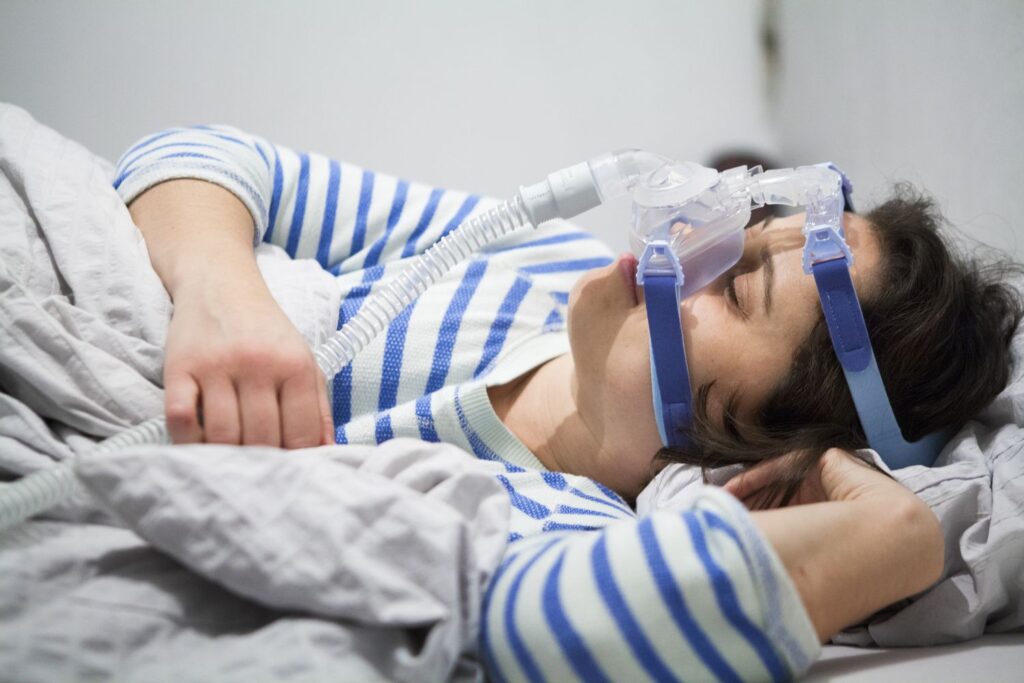The positive effects of CPAP masks and therapy can be felt for up to 72 hours after treatment has ended. Your CPAP mask is not mandatory 24 hours a day. If you get sick and find that you can’t use your CPAP mask because of a runny nose, don’t worry; breaks are acceptable.
However, even if you catch a cold, you should give your CPAP machine and mask a try. Your body’s immune system will be strengthened by a good night’s sleep. You may find that the warm air from the CPAP machine makes it easier to breathe if your nose isn’t too stuffy to breathe through the mask.
Here are five pointers to buy cpap mask while sick with a cold.

Make Use of a Full-Face CPAP Mask.
There are three distinct designs for CPAP masks. Whether you sleep with your mouth open or closed, whether or not you have facial hair, and how restless your sleep is will all play major roles in determining which option is ideal for you.
When you have a cold and your nose is stuffed up, a full-face CPAP mask is preferable to a nasal mask or nasal pillow mask because it allows you to breathe through your mouth as well as your nose. You can still get some air even if your nose is clogged.
For its outstanding ratings, performance, and reliability, as well as its ability to withstand high air pressure settings, the ResMed Mirage Quattro full face CPAP mask is our recommendation.
Nasal Spray and Decongestants
Over-the-counter medications like decongestants can often reduce congestion to a more bearable level. Decongestants are an option, but they come with some major side effects, so we advise you to try nasal sprays first. Want to know if you’re a candidate for laser eye surgery? Find out here: https://www.personaleyes.com.au/costs/lasiklaser-eye-surgery-cost.
People with heart issues should talk to their doctor before using certain decongestants since they can raise blood pressure and cause irregular heartbeats. Anxiety, nausea, headaches, and dizziness are all side effects of decongestants, both in pill and liquid form.
Some medications are packaged in blue and purple and branded “nighttime medicine,” whereas others are packaged in orange and yellow and labelled “daytime medicine.” Decongestants, especially those with pseudoephedrine, tend to be considered daytime medicine. This means that you will have a hard time falling asleep for several hours after taking them.

Humidifier Therapy
Consider getting a humidifier if you don’t have access to a steam room. The congestion in your sinuses might be relieved with the help of a humidifier or vaporiser. Clean, warm, humid air is beneficial for sinus health, especially for people with seasonal allergies or the common cold.
The comfort and privacy of a bathroom makes it ideal for this kind of procedure. Surprisingly, a humidifier session can be rather soothing.
People whose nasal passageways and throats are dry because of low humidity can benefit greatly from this treatment. Weak heating systems, illness, or both could be at blame. A CPAP humidifier can be added to some machines by connecting an optional water chamber.
Heated humidifiers for CPAP machines require a heated tube to mitigate condensation. A humidifier can alleviate congestion caused by the common cold and prevent dry mouth.
Use Vapour Rub
Many people have relied on vapour rub containing camphor and eucalyptus for hundreds of years. The medication is effective because it signals to the brain that nasal congestion is no longer a problem.
It’s ironic, but this will cause your brain to reduce mucus production in your sinuses. Many people use Vapor Rub every year during flu season to relieve stuffiness in the nose.
Even if it’s just a placebo effect, a study conducted by researchers recently discovered that vapour rub was more effective than other cough and cold medicines in relieving children’s cold symptoms.
Researchers had to get creative in order to make this a double-blind study due to the odour associated with substance used. So that no one could tell the difference between the Vicks and the placebo, they had all of the parents put Vicks vapour rub under their noses.
Indeed, many were taken aback by this finding. The use of vapour rub has been demonstrated to reduce the severity and frequency of coughing in both children and their parents. However, scientific evidence suggests it is not considerably better at stopping a runny nose.
Sleep on your side with your head propped up
Sleeping on one’s back can be difficult due to the effects of gravity. Sleeping in a “soldier style” might exacerbate congestion and sleep apnea. Thankfully, there is a simple answer to this predicament. You could try switching to a side or stomach sleeper if you often sleep on your back.
Obstructions cause eighty percent of all cases of sleep apnea. This suggests that obstructions in the airways are the root cause of apnea for the vast majority of sufferers. Any number of conditions, from inflamed tissue to a numbed tongue, can serve to obstruct the flow of saliva.
This issue is compounded within your sinuses. The easiest approach to get some shut-eye if you’ve been diagnosed with sleep apnea and also have a cold is to keep your airways clear. Add some more pillows to your bed and you’ll be good to go.
Conclusion
For persons who suffer from sleep apnea, recovering from a cold can be a particularly trying process. A weak immune system can be a direct result of not getting enough sleep, and a stuffy nose can be all that stands between you and a decent night’s sleep.
Air Liquide Healthcare suggest you try a full-face CPAP mask, a nasal spray, a humidifier, Vapour Rub, and several sleeping positions to hasten your recuperation.

